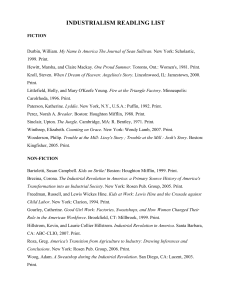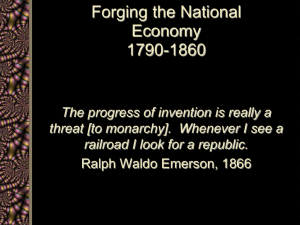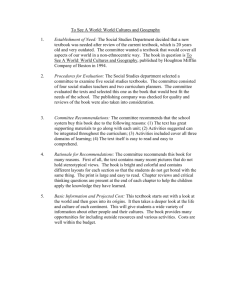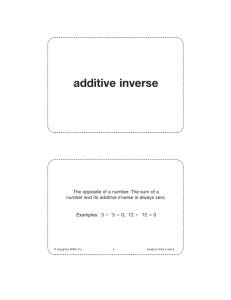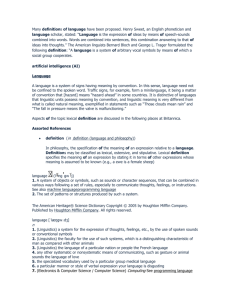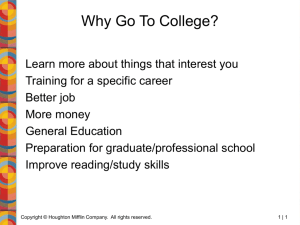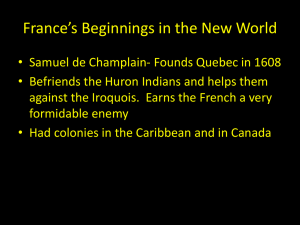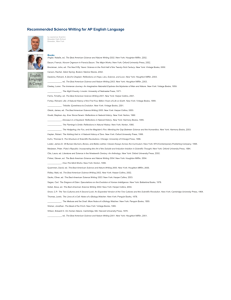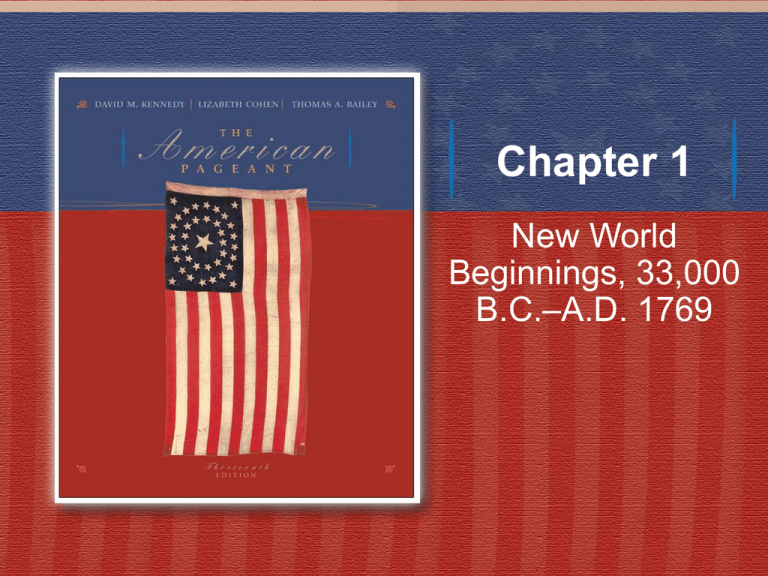
Chapter 1
New World
Beginnings, 33,000
B.C.–A.D. 1769
The First Discoverers of America
The origins of the first Americans
remain something of a mystery.
According to the most plausible theory
of how the Americas were populated,
for some 25,000 years, people crossed
the Bering land bridge from Eurasia to
North America. Gradually they
dispersed southward down ice-free
valleys, populating both the American
continents.
Copyright (c) Houghton Mifflin Company. All Rights Reserved.
Incan Culture
This mortar and corncob-shaped pestle from the Incan stronghold in present-day
Peru vividly illustrate the importance of corn in Incan life.
Michelle Vautier/ Woodfin Camp & Associates
The New World as Paradise, by Theodore de Bry
This sixteenth-century engraving by the Flemish artist illustrates the Indian method of
hunting by setting fires to drive wild game into bow range.
John Carter Brown Library, Brown University
The World Known to Europe, 1492
Technological developments in shipbuilding and navigation, as well as a desire to find
a water route to Asia, would soon lead Europe into an era of unprecedented
exploration.
Copyright (c) Houghton Mifflin Company. All Rights Reserved.
Trade Routes with the East
Goods on the early routes passed through so many hands along the way that their
ultimate source remained mysterious to Europeans.
Copyright (c) Houghton Mifflin Company. All Rights Reserved.
The Columbian Exchange
Columbus’s discovery initiated the kind of explosion in international commerce that a
later age would call “globalization.”
Source: Adapted from Out of Many: A History of the American People, Third Edition, Combined Edition by Faragher, Buhle,
Czitrom, and Armitage. Copyright © 1999. By permission of Prentice-Hall, Inc., Upper Saddle River, NJ.
The Devastation of Disease
This engraving of a burial service records the horrendous impact of Old World
diseases on the vulnerable Native Americans.
© Bettmann/ CORBIS
Principal Early Spanish Explorations and Conquests
Note that Coronado traversed northern Texas and Oklahoma. In present-day eastern
Kansas, he found, instead of the great golden city he sought, a drab encampment,
probably of Wichita Indians.
Copyright (c) Houghton Mifflin Company. All Rights Reserved.
Conquistadores, c. 1534
This illustration for a book called the Kohler Codex of Nuremberg may be the earliest
depiction of the conquistadores in the Americas. It portrays men and horses alike as
steadfast and self-assured in their work of conquest.
© Bettmann/ CORBIS
An Aztec View of the Conquest, 1531
Produced just a dozen years after Cortes’s arrival in 1519, this drawing by an Aztec
artist pictures the Indians rendering tribute to their conquerors. The inclusion of the
banner showing Madonna and child also illustrates the early incorporation of Christian
beliefs by the Indians.
Library of Congress
Cortés and Malinche, c. 1540 (detail)
Though done by an Indian artist, this drawing identifies Malinche by her Christian
name, Marina. She eventually married one of Cortes’s soldiers, with whom she
traveled to Spain and was received at the Spanish court.
Bibliotheque Nationale, Paris
Principal Voyages of Discovery
Spain, Portugal, France, and England
reaped the greatest advantages from
the New World, but much of the earliest
exploration was done by Italians,
notably Christopher Columbus of
Genoa. John Cabot, another native of
Genoa (his original name was Giovanni
Caboto), sailed for England’s King
Henry VII. Giovanni da Verrazano was
a Florentine employed by France.
Copyright (c) Houghton Mifflin Company. All Rights Reserved.



